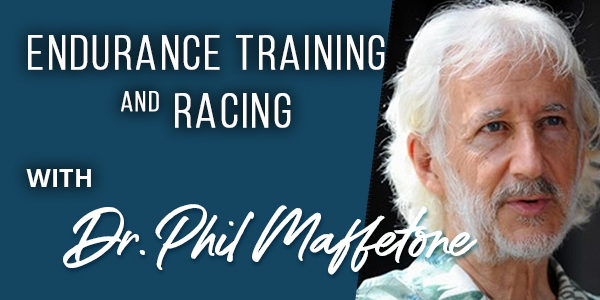
The something-for-everyone workout that can work wonders
By Dr. Phil Maffetone and Hal Walter
Maybe you feel unmotivated or have a low energy levels, or whatever you’re doing isn’t working. Perhaps you’re just starting back up after a layoff, or the weather is uninviting. Or you keep having minor aches and pains, or just need a physical or mental break.
It could also be that you want to improve your fat-burning capacity, lose weight, or boost your athletic performance.
Regardless of the reason, it could be time for a Sub-MAF workout. This state of training is one we should all venture into regularly, and throughout the course of each year.
What is Sub-MAF? It’s an aerobic workout that’s done below your MAF 180 Training Zone range of 10 beats. (For a review of the 180 Formula and how to calculate your training zone, click here.)
Exercising within your 10-beat 180 Zone can bring the maximum effects of increasing your aerobic fitness and fat-burning capacity without the risk of injury, illness or mental burnout. However, one should not dismiss additional health benefits of exercising below this training zone. You’re already doing this for short periods when warming up and cooling down as part of a successful MAF workout.
Expanding a great sub-MAF base can help improve all levels of both health and fitness, and is vital for ultra-marathoners, adventure racers or other long-duration athletes as these competitive events are often performed in the Sub-MAF state. It is often recommended that athletes, including those who are world class, include regular long walking workouts. Sub-MAF is also great for beginners and a quick way to promote fat-burning for those seeking weight loss.
For starters, exercising at below the 10-beat MAF range provides additional great aerobic benefits. Sub-MAF stimulates increased fat-burning at the cellular level, helping to increase your aerobic capacity at higher outputs, similar to the way training at MAF 180 also increases anaerobic capacity — but it has many other health and fitness advantages as well.
Training a wider range of aerobic muscle fibers, those often not used during typical training intensities, helps to enlist more aerobic muscle fibers and boosts additional mitochondrial function. This can be accomplished with very slow physical activity such as walking, hiking and gentle jogging, or easy cycling and other activities. The positive gains are the same regardless of fitness level — even elite athletes reap benefits.
These benefits are not all related to aerobic fitness. The mitochondria, organelles within the cells in red, slow-twitch aerobic muscle fiber, not only burn fat for energy, but influence many other related areas of health and fitness. Mitochondrial activity can help prevent disease, and reduce muscle loss that accompanies aging — a key problem associated with overall mortality. Mitochondria also are important in regulating calcium metabolism, diaphragm function, oxidative stress, and age-related development of insulin resistance.
Standard MAF training practice requires a warmup period of at least 12 minutes gradually increasing from the resting heart rate to the 10-beat 180 zone, followed by a similar cool-down period after the time spent in the zone. The Sub MAF workout is essentially staying in the warm-up/cool-down zone — somewhere between resting heart rate and the lower end of your 180 zone — for the entire duration of the session.
So who may benefit from the Sub-MAF workout? Everyone! Here are some examples:
- Anyone who wishes to increase fat-burning.
- Beginner exercisers or those who have had a layoff from their exercise routine.
- Those who wish to improve health and slow the aging process.
- Fasting extension — for some people, a workout before breaking a fast can work well, especially something real easy like sub-MAF.
- Off-season athletes.
- Athletes seeking active recovery/rest.
- Individuals in any type of rehabilitation.
- Athletes who wish to increase duration for ultra-distance events without increasing risk of excess training volume, illness or injury.
- Competitive athletes who wish to get faster — it’s now clear that improved fat-burning can play a major role in anaerobic capacity.
- Long distance athletes who need to reset their eternal clocks. (See If Einstein were your coach).
- Those in need of active relaxation/meditation.
Some may think the Sub-MAF workout is hardly worth the effort. But don’t be fooled — this seemingly easy workout can bring great benefits.
Hal Walter is the MAF senior editor and an MAF founding coach
Coming soon: The MAF Walking Program!








